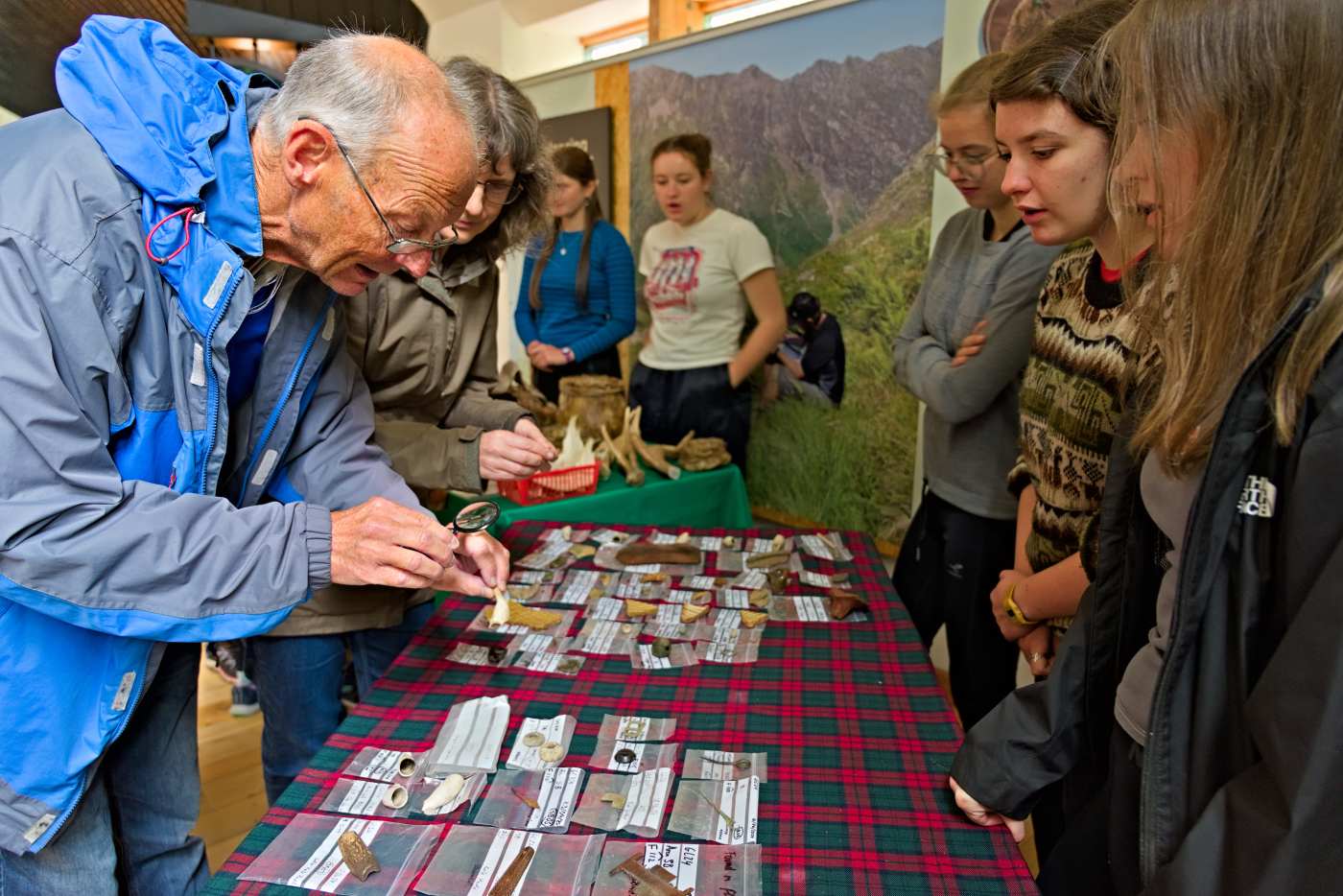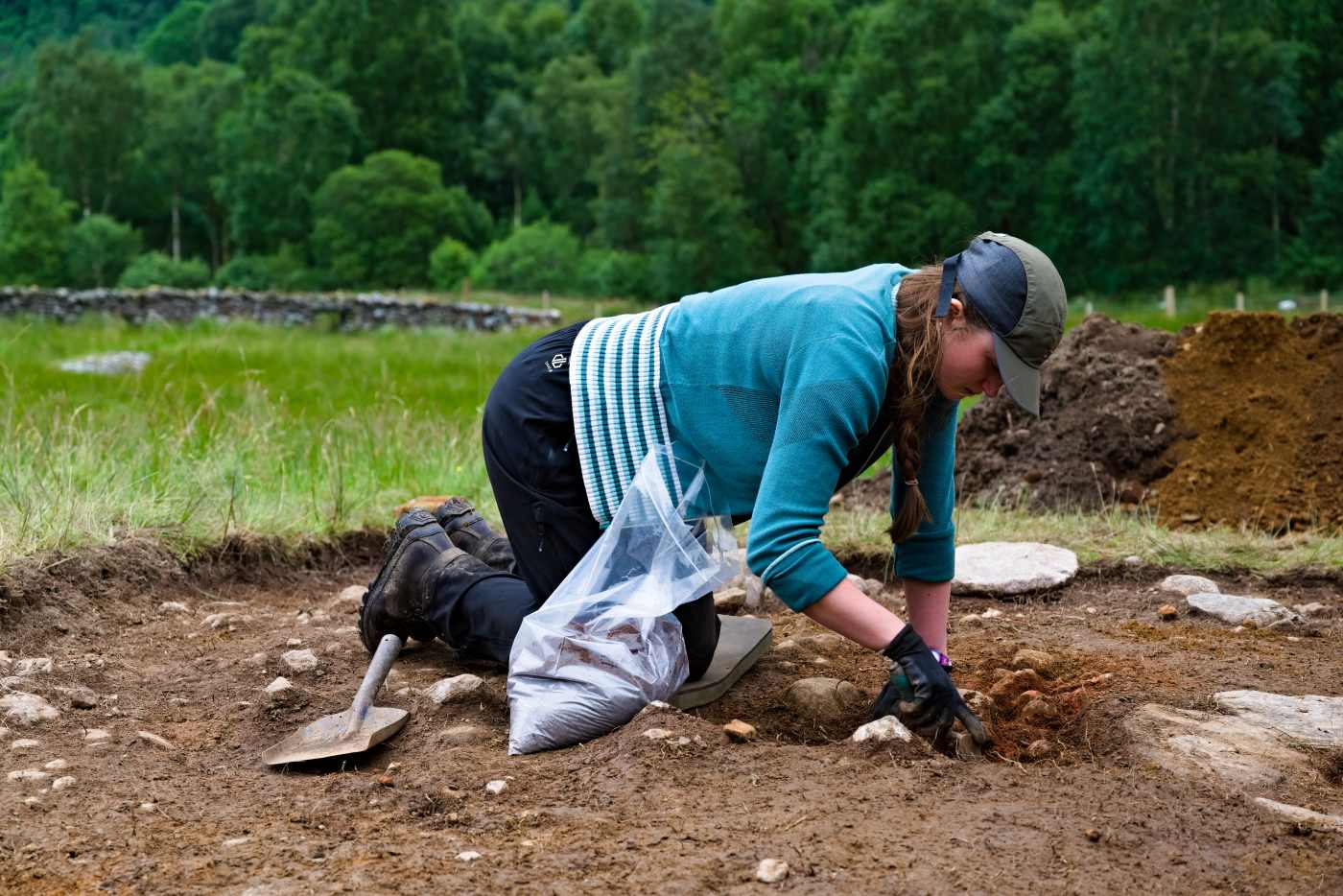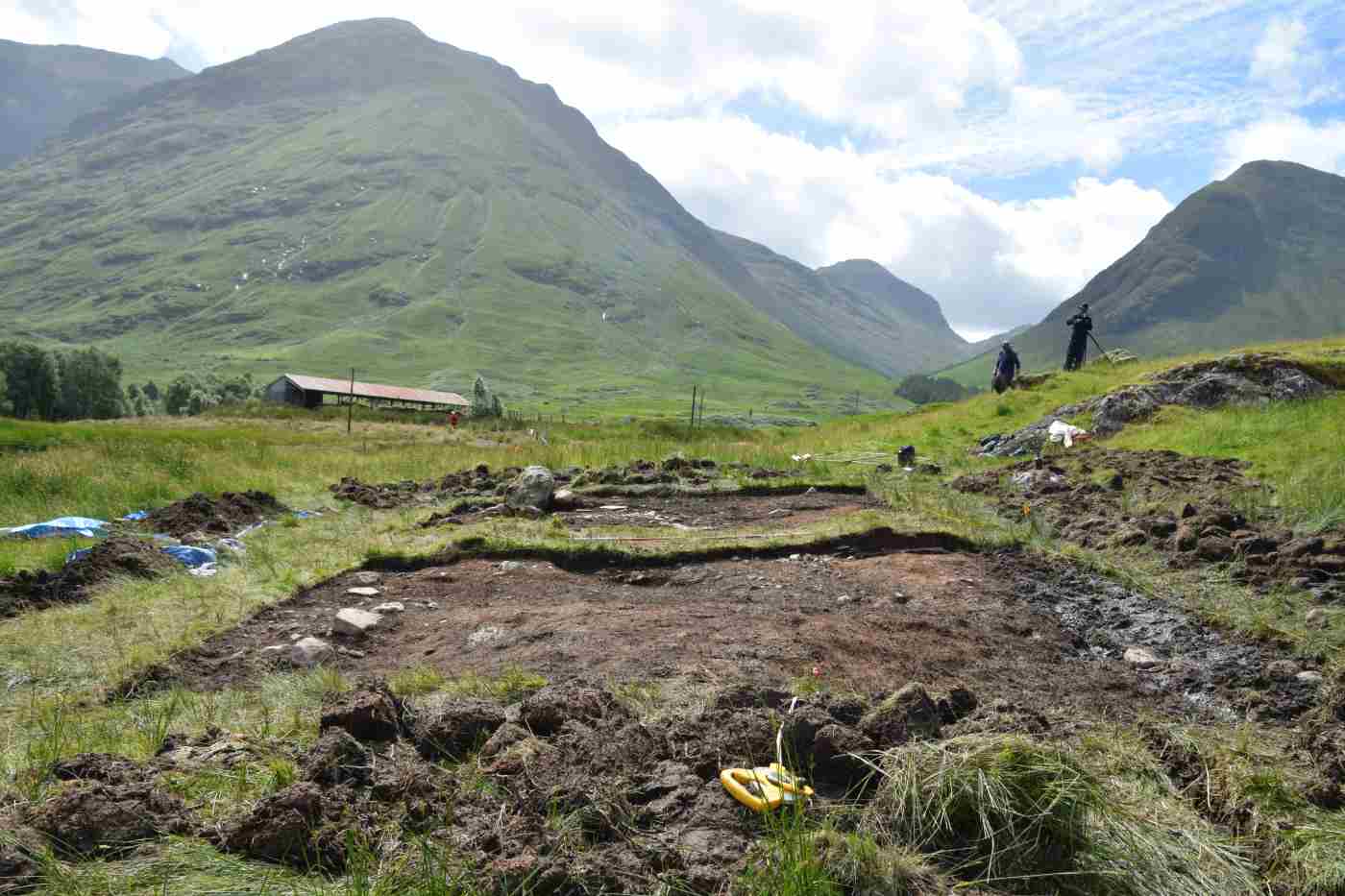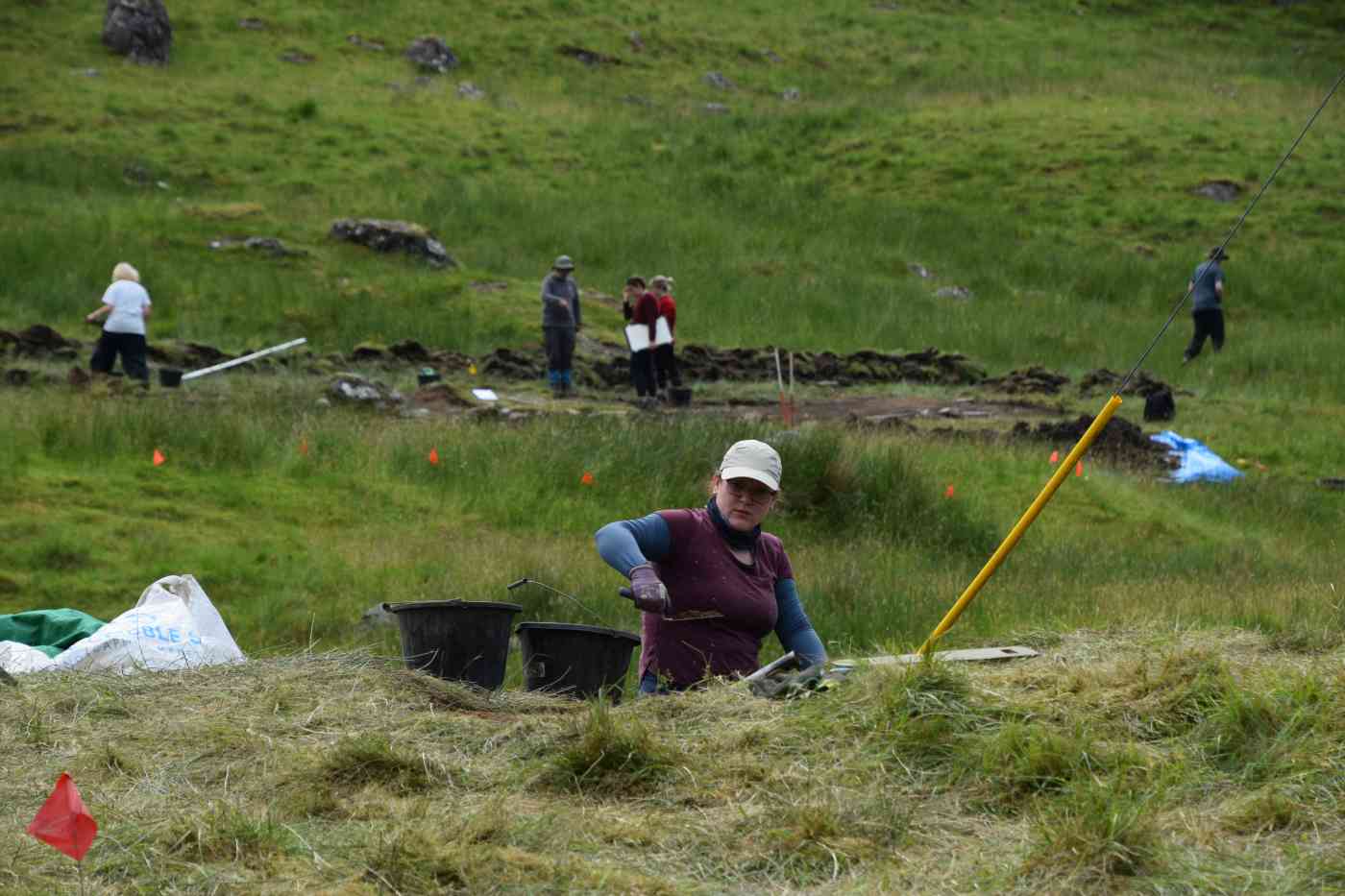Update from the Glencoe Archaeology Project team
Published: 29 July 2025
Excavations, surveys and media creation across the Glencoe landscape in June and July 2025
This summer our Glencoe Archaeology Project team were out in the field again with a programme of excavations, surveys and media creation across the Glencoe landscape. This project is a partnership between the National Trust for Scotland and the University of Glasgow and is co-directed by Professor Michael Given (UofG Arch), Derek Alexander (NTS), Dr Lizzie Robertson (UofG Arch), Dr Gareth Beale (UofG Arch), Dr Nicole Smith (UofG Education) and Dr Edward Stewart (Archaeology Scotland).
Building on our 2024 season this year the excavation team, comprising staff and students from Archaeology at the University of Glasgow, the NTS Archaeology team, and volunteers, continued investigations at the township of Achnacon, or ‘field of the dogs’. In 2024 we investigated with limited excavations a 17th century tacksman’s house, and 18th century house, a platform and a kailyard. These excavations turned up an exciting array of glass, metal and ceramic artefacts including a buried collection of coins within a hearth, a piece of 1690 Irish gun-money from a floor, and an impressive assemblage of imported pottery from the tacksman’s house. We know the name, and story, of the Tacksman of Achnacon in the later 17th century and the role this structure played in the events of the Glencoe Massacre of 1692. This year we returned to this site to open a larger trench area over the 17th century tacksman’s house and also investigated a 17th century tenants house, a corn drying kiln, a kailyard and an area of rig and furrow cultivation. This year we were similarly not disappointed with an interesting array of artefacts recovered from these excavation areas which enrich our understandings of the connections this Highland community had to their landscape, and across Scotland, Britain, Europe and beyond in the 17th and 18th centuries.
Our survey team, continuing where they left off last year have been working to map the settlement archaeology of the glen, from just past Inverigan at the NTS Centre to Achtriachtan and the Pass of Glencoe. This work is important for contextualising the granular focus of our excavations, just a tiny area in this vast glen, with their surroundings. As Professor Michael Given likes to say; ‘we archaeologists don’t just deal in sites, but landscapes’, through these surveys we connect the byrehouse to its kailyard, the township to its cultivated lands and the cultivated valley sides to the shieling groups and peat banks of the uplands, generating these connections by filling in the blanks allows us to better understand this landscape and how it has been shaped by, and in turn shaped, its communities. This act of filling in the blanks also allows us to tell the very human stories of this now largely ‘empty’ glen. What now might look like wilderness was once a busy occupied landscape, and we as archaeologists are uniquely placed to generate new narratives, and pass these on, opening visitors eyes to an array of past lives among these mountains.
But how do we tell these stories? How do we effectively communicate complicated landscape narratives like these to the public? How do we get people to see the ‘humps and bumps’ of ephemeral upland archaeology as relics of peoples daily lives and taskscapes? Our creative media team work alongside our excavators and surveyors to create media which communicates these landscape stories to new audiences. This comes in a range of mediums; from the creative audio work, soundscapes, and sensory archaeologies of Dr Lizzie Robertson, to the perception challenging films of Dr Gareth Beale, to Dr Nicole Smiths work with representation through found poetry and found pigments from the landscape and our practices. In partnership with the Glencoe Folk Museum and National Trust for Scotland we hope to use these resources to present new and challenging narratives around these uplands which move away from the tropes of wild upland sublimity, and instead challenge us to imagine busy, occupied, and productive uplands in the recent past, and perhaps the present, and future too.
As part of the field school season we delivered a festival of archaeology with opportunities for locals and visitors to find out more about our research, and try their hand at archaeology. Over the course of the season we were supported by 30 volunteers who across the season gave over 1000 hours of volunteering time. We were also joined by 52 primary school pupils from Kinlochleven, Glencoe, Ballachulish, St Brides, Onich and Duror, and supported 13 work placements through the Lochaber Developing Young Workforce team with students attending from Kinlochleven, Lochaber, Mallaig and Ardnamurchan High Schools. Our Dig for a day event was attended by approximately 40 visitors and locals and also delivered site tours for drop-in visitors and visiting societies, with over 200 people attending these over the course of the two week season. Our open day event held at the NTS centre with storytelling, artefact handling, experimental archaeology, creative installations, and traditional crafts (supported by UofG PhD student Nysa Louden) was attended by over 1785 people. These engagements and events with locals and visitors are an important opportunity for us to share our stories to a broader audience.
Thanks are owed to the Students of the Glencoe Field School 2025, our senior honours site assistants and graduate site supervisors, the NTS team and our amazing volunteers, the NTS Glencoe and Glen Etive estate and centre teams and the Glencoe Folk Museum Team. We were also lucky this season to be joined at various points by our project specialists Dr Jesper Ericsson and Dr Giovanna Vitelli from the Hunterian Museum, Derek Hall, and were supported by UofG staff and students including Nysa Louden, Cole Juckette, Aris Palyvos, Gala Morris and Ally Parker-Banks. This season we were also supported by a range of partners including the Lochaber DYW, and the Glencoe and Kinlochleven primary school clusters.
Written by Dr Edward Stewart (Affiliate Researcher)


First published: 29 July 2025
<< Latest news



